-
Benefits in Finishing Packaging and Distribution Near Customers

warehouse order picker packing and sealing cardboard box with tape for dispatch As shippers and importers, there are many factors to consider when packaging and shipping products. In e-commerce, variety and agility are core to success. That includes packaging and distribution resources. It’s your role to figure out to reoptimize efforts and reduce costs. That’s a basic premise in any supply chain optimization strategy. Of course, it’s difficult to understand the importance and how packaging can influence operations on a global scale when rates are still so unstable.
Consider this. Despite declines in the shipping industry, rates are still higher than average, putting new pressure on packaging and distribution strategies. According to Reuters’ data sources, “long-term contract rates finished 2022 about 20% lower than the pandemic peak of more than $8,000 per container. [And] maritime consultancy Drewry […] expects contract rates to halve in 2023. That forecast would put rates at about $3,200 versus the pre-pandemic rate of around $1,500 (Baertlein).”
Rates at this level are simply inefficient globally, meaning that shippers should rethink their packaging and distribution strategies. Specifically, finishing product packaging closer to end users will yield significant benefits and opportunities. Here are the top benefits of such a strategy.
1. Leverage Bulk Packaging Solutions to Get Lower Costs.
Companies looking to reduce their packaging and distribution costs should consider bulk packaging solutions. Bulk packaging is typically sourced from packaging distributors that partner with various manufacturers. This allows them to provide clients with a wide selection of packaging materials and design options. Packaging distributors buy in bulk and save money on packaging costs. Thus, businesses can often save significantly more than they would on their own.
2. Improve Flexibility to Create Brand or Region-Specific Packaging.
Working with a packaging supplier to improve flexibility and create multiple packaging designs tailored is an advantage. Imagine building packaging to target specific brands or regions. Plus, packaging customization allows for unique packaging formats that help the product stand out from its competitors. For brands in highly competitive industries, custom packaging presents the possibility of increased visibility, eventually leading to higher sales. Custom packaging also makes it easier for companies to incorporate their branding messages into the packaging design, defining their presence in the market.
3. It Enhances the Optimization of Resources.
Optimizing packaging and distribution is essential to increase efficiency and minimize costs. Understanding the packaging and distribution process can help businesses save more resources, enabling them better to adjust their resources for a more significant impact. This includes reducing resource requirements across departments within your organization. Plus, knowing and understanding your global fulfillment footprint is invaluable to running a successful business
Streamline Finishing in Your Packaging and Distribution Strategy With ModusLink.
Doing more with less will always be paramount to supply chain management. Today’s shippers and global trade parties need to understand the vital benefits of finishing closer to consumers and how that translates into improving their manufacturing and distribution networks. The right packaging system and strategy take advantage of this fact. ModusLink can help you utilize these benefits to optimize your packaging and distribution process. Request more information on how ModusLink can reposition your finishing strategy for success to get started.
Bibliography
Baertlein, Lisa. “Analysis: Some ocean shipping rates collapsing, but real price relief is months away.” Reuters, 9 January 2023, https://www.reuters.com/business/retail-consumer/some-ocean-shipping-rates-collapsing-real-price-relief-is-months-away-2023-01-09/. Accessed 17 January 2023.
Disclaimer:
Content is the opinion of ModusLink Corporation and is not intended to act as compliance or legal advice.
.
-
The State of Cross-Border E-Commerce in the EU

Cross-Border E-Commerce The state of cross-border e-commerce in the EU comprises a complex and dynamic array of factors that influence consumer behavior and the success of online retailers. E-commerce remains a popular trend in the EU, with many consumers turning to online retailers for shopping. This trend is particularly evident in the UK, where e-commerce accounts for a significant share of retail sales, and brands desire to reach customers through online channels. Let’s take a closer look at what’s happening throughout EU e-commerce and what companies can do about it.
Rising Cross-Border Logistics Costs
Logistics costs and delivery times are important factors that can influence the success of e-commerce in the EU. Rising logistics costs refer to the increasing cost of transporting goods from one location to another, including fuel, labor, and other expenses. These costs can significantly impact the prices of goods and services offered by online retailers, as well as the overall profitability of the e-commerce industry.
In recent years, logistics costs in the EU have been rising due to several factors, including increased demand for online shopping, the expansion of e-commerce into new markets, and the impact of global economic trends. Specifically, costs rose 5.4 index points quarter over quarter in 2022, hitting 129.7, which is also 26.4 points higher year over year (IRU).
This has led to concerns about the sustainability of cross-border e-commerce in the long term, as well as about the ability of retailers to offer competitive prices and delivery times to consumers.
Logistics costs and delivery times will continue to be a significant concern for the e-commerce industry in the EU. Fortunately, there are a few ways companies can combat these costs, including
- Pass charges to customers. One potential solution to the challenges of higher cross-border logistics costs and longer delivery times in the EU e-commerce industry is to pass some of these charges along to customers. Shippers can do this by using surcharges or other fees that are added to the price of goods or services. While this approach may not be popular with consumers, it can help online retailers cover some of their increased costs and maintain profitability.
- Increase the minimum order value. Another way to overcome higher costs and timelines is to increase the minimum order value for cross-border e-commerce orders. By requiring customers to spend a certain amount of money on qualifying for free or discounted shipping, retailers can encourage larger orders and reduce the impact of logistics costs on their bottom line.
- Leverage direct injection and dropshipping. Finally, retailers can leverage direct injection and dropshipping to improve their supply chain management and reduce costs. Direct injection refers to shipping goods directly from the manufacturer to the customer, bypassing traditional distribution channels. This can help to reduce lead times and logistics costs, making it easier for retailers to offer competitive prices and delivery times to their customers. On the other hand, drop shipping involves partnering with third-party suppliers to handle the storage, packaging, and shipping of goods on behalf of the retailer. This cross-border logistics strategy can also help to reduce costs and improve delivery times, as retailers can take advantage of the expertise and resources of their partners.
Uncertainty & Complexity Over Cross-Border Logistics of Warehousing
Uncertainty and complexity over cross-border warehousing and shipping can be a major challenge for businesses engaged in cross-border e-commerce. Here are a few ways to address these issues:
- Decentralize your warehousing and distribution strategy: Instead of relying on a single, centralized warehouse, consider decentralizing your warehousing and distribution strategy. This can help reduce the risk of delays and disruptions and make it easier to adapt to changes in demand or supply.
- Increase traceability of goods for EU storage and warehousing: Ensuring that your goods are properly tracked and traced throughout the storage and warehousing process can help to reduce uncertainty and complexity. This can be especially important when dealing with cross-border shipments, as it can help ensure that your goods are properly accounted for and that you comply with EU regulations.
- Trouble finding proper and available storage for goods: If you’re having trouble finding adequate storage, it may be worth considering outsourcing fulfillment and optimization to a third-party provider. This can help ensure access to the storage and warehousing facilities you need without heavily investing in purchasing cross-border logistics infrastructure.
- Consider outsourcing fulfillment and optimization to a third-party provider: Outsourcing fulfillment and optimization to a third-party provider can help to reduce uncertainty and complexity by allowing you to take advantage of their expertise and resources, including payment methods and customs clearance capabilities. This can help to improve the efficiency of your supply chain and can also help to reduce the risk of delays or disruptions.
It’s worth noting that 21% of online shoppers abandon purchases due to delivery issues, according to a recent survey. By addressing the challenges of cross-border warehousing and shipping, businesses can help to reduce the risk of delivery issues and improve the overall customer experience.
Handling the VAT-Related Issues in Cross-Border E-Commerce
As with any process for freight moving, e-commerce markets in the e-commerce are subject to different regulations and fees. The most common fee associated with cross-border transportation is likely the VAT tax. There are several common problems that businesses may encounter when managing VAT costs in a global market (byrd technologies):
- Complex VAT rules and regulations: VAT rules and regulations can vary significantly from country to country, and it can be difficult for businesses to keep up with the latest changes. This can lead to compliance issues and potential fines if a business fails to apply the VAT correctly.
- Difficulty in determining the correct VAT rate: In some cases, it can be challenging to determine the correct VAT rate to apply to a particular product or service. This is especially true when dealing with complex or multi-stage transactions.
- Administrative burden: Managing VAT can be time-consuming and burdensome for cross-border logistics businesses, especially when dealing with large transactions. It can be difficult to keep track of all the necessary documentation and ensure that the correct VAT is applied to each transaction.
- Potential for errors: Even with the best intentions, businesses can make mistakes regarding VAT. This can lead to compliance issues and potential fines if the errors are not caught promptly.
EU cross-border e-commerce naturally involves a careful understanding of VAT, as it can significantly impact a business’s costs. It’s important for businesses to be fully aware of the VAT rules and regulations that apply to their particular products and services and to ensure that they comply with these rules at all times. This may require working with a VAT professional, such as a customs broker or supply chain partner. Such parties help to ensure that all necessary cross-border shipping and documentation are in place and that the correct VAT is applied to all transactions.
Businesses can take a few key steps to protect against VAT issues. These include:
- Get an EORI number: EORI, or Economic Operators Registration and Identification, is a unique identification number required for businesses that engage in cross-border trade with the European Union (EU). To get an EORI number, businesses must apply through their national tax authority.
- Classify products based on customs tariff numbers: It’s important for businesses to properly classify their products based on the correct customs tariff numbers. This ensures that the correct VAT rate is applied to the goods and helps to avoid any potential disputes with customs authorities.
- Enclose the commercial and pro forma invoice with all consignments: A commercial invoice is a document that outlines a sale’s details, including the sale’s price and terms. A pro forma invoice is a preliminary invoice issued before the goods are shipped. Shippers should include both documents with all consignments to ensure that the correct VAT is applied.
By taking these steps, businesses can help to ensure that they follow VAT regulations and avoid any potential issues that may arise in the course of international trade. It’s also a clever idea for businesses to work with a knowledgeable VAT professional or consult with their national tax authority to ensure that they are fully informed about the latest VAT regulations and requirements.
Streamline EU E-Commerce and Cross-Border Logistics With ModusLink
E-commerce in the EU is a complex and dynamic industry, with a wide range of factors that can influence consumer behavior and the success of online retailers. From rising logistics costs and delivery times to concerns about the environmental and economic impacts of e-commerce, there are many challenges that businesses must navigate to succeed.
Fortunately, solutions can help businesses streamline their operations and overcome these challenges. One such solution is ModusLink, a network and transportation partner that can help businesses optimize their supply chain management, reduce costs, and improve efficiency. Connect with an expert at ModusLink to get started today.
Bibliography
byrd technologies. Guide For Cross-Border Trade in the European Union. 2022. 13 December 2022. <https://getbyrd.com/en/cross-border-ecommerce-eu-ebook/?hsCtaTracking=749e20c5-d0f2-455f-a353-d8d206c60894%7C4b6651f5-26e2-41b2-a670-621b8a73fcbb>.
IRU. 3 November 2022. IRU. 16 December 2022. <https://www.iru.org/news-resources/newsroom/european-road-freight-rates-soften-after-hitting-another-all-time-high-q3>.
Disclaimer:
Content is the opinion of ModusLink Corporation and is not intended to act as compliance or legal advice.
-
Top 3 e-Commerce challenges
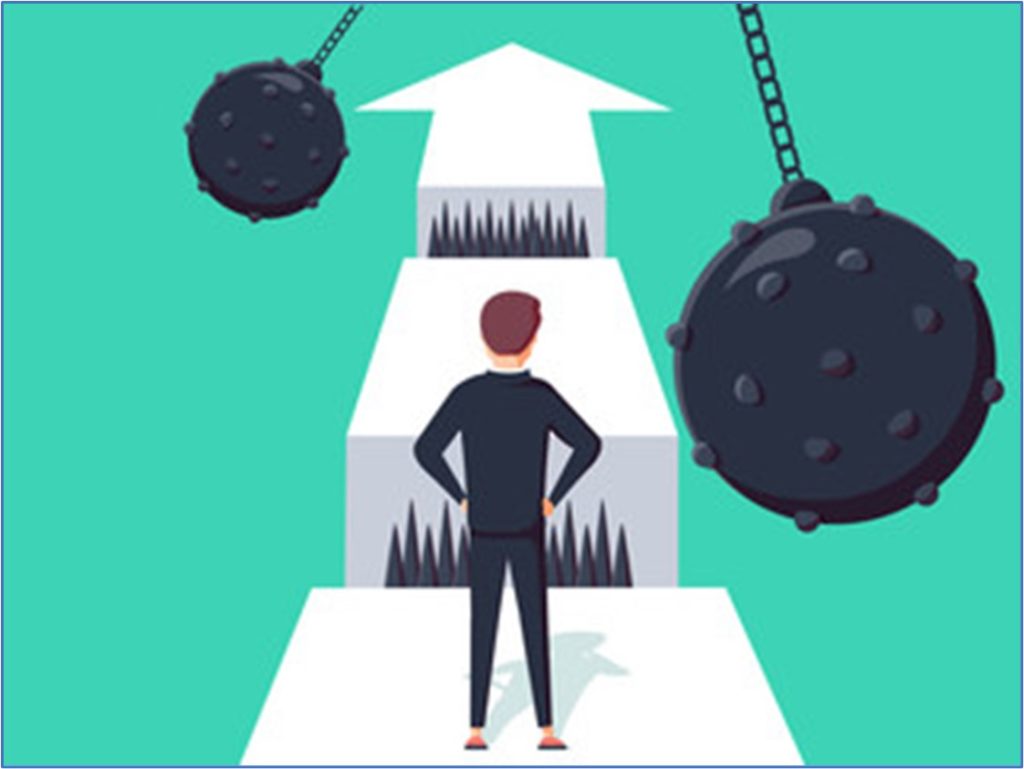
Challenging, yet rewarding
There is plenty of research and evidence that E-commerce will continue to grow in next few years to come. Companies engaging in E-commerce are growing, customers that purchase their products online are normalized across different product branches and payment methods that better suit online transactions such as PayPal/Bitcoin are becoming increasingly popular. The reasoning for this growth can be largely contributed to the flourishing of technological advancements.
Conducting business online is now easier than ever as there is a wide range of platforms for you to sell your products. Outsourcing the End-to-End Supply Chain activities is also getting more common due to the well-established third-party companies that provide professional aid to all that seek help. SMEs especially are able to scale accordingly when using outsourced Supply Chain activity.
Customers are buying their products more frequently through online platforms. This is mainly due to the convenience factor combined with the provided Supply of products, regardless of their respective branch. Nowadays, all sorts of products are bought online from groceries to wedding gifts to personalized clothing.
Lastly, payment methods are also receiving an interesting change in dynamic which contributes to the growth of Ecommerce as a concept. Very simplistic yet highly functional payment methods such as ideal are improving rapidly. A few years ago, when paying for your purchase online through ideal, you had to use your bank reader and card to finalize the purchase. This was a big hassle and turned off many customers looking to buy their products online. Nowadays, just one click of a button is required on your mobile phone to complete a purchase. You are even able to preset payment settings for known companies so that you do not need to complete a full payment process to finish the transaction. This saves a large amount of time and effort. Groceries for example can be purchased automatically by setting dates/times when running out.
In short, conducting E-commerce can be highly rewarding if done right. Needless to say, there are plenty of challenges within the industry. New challenges are also arising as some market phenomena are changing. The increase in popularity of same-day-delivery started to weigh on the supplier companies such as DHL/UPS/FedEx/TNT and resulted in a decrease in supplier performance and successful delivery KPI’s. This is just one of the many challenges that come with Ecommerce. The top 3 biggest challenges for 2022 are listed below.


Top 3 E-commerce challenges
- Competitive advantage & Competitor Analysis
With the rise of E-commerce companies, it is more and more difficult for new startups to differentiate themselves from their competition. While being difficult, it is also essential as a strong USP often provides a competitive advantage that allows companies to succeed and scale within the E-commerce business. How is this done exactly? The best way to leverage a strong competitive advantage is by continuous Competitor Analysis.
Any company within the E-commerce business looking to succeed ought to do a strong thorough analysis of their competitor. You need to know the ins and outs of your main competitors in order to reinforce your own strategy. Knowing your competitors’ products from A to Z, the way they are gaining their prospects, their handling of customers is vital as it allows you to take what works and discard what doesn’t. Knowing your competitors thus also provides you with the knowledge and ability to stand out. Study your competitors, understand what their missing and leverage it to gain your competitive advantage.
- Customer Loyalty
According to Vue.Ai et al. (2022), the importance of customer loyalty can be illustrated by the following two main facts.
*It can cost up to 5 times more to acquire a new customer than retaining an existing one.
* The success rate of selling to a current customer is 60-70% compared to only 5-20% success rate of selling to a new customer.
These two facts clearly emphasize the importance of customer retention and loyalty. Once you have acquired a customer, keeping that customer, or turning that customer into a fixed customer is highly important. This process should be seen as fuel for your business. How are companies able to do this best? Strong customer service should be top priority as this does wonders for customer retention. Follow-up is equally important as proper reach-out attempts have shown to provide remarkable conversion rates, if done correctly. Lastly, rewards. Rewarding returning customers through promotions or discounts could strongly affect your customer loyalty.
- Shipping and Delivery
On-time shipments and deliveries have proven to increase customer satisfaction by remarkable amounts. In turn, delayed shipments and lackluster delivery have proven to drastically decrease customer retention whilst creating bad brand image. With fuel pricing increasing and heavy pressure on delivery companies it is vital that companies maneuver the right way when trying to get their products to their end-customer. As discussed before, making use of a professional, experienced Supply Chain company that offers end-to-end aid can be of immense help when trying to scale your business. Even large companies should not overlook the option to outsource their supply chain as professional companies often are able to leverage great results by consolidating shipments, offering 24/7 customer service and well-established payment solutions/support.
Would you like to know more on the biggest challenges in E-commerce? Talk to a ModusLink Expert today by clicking here.
Bibliography
Ecommerce Sales Size Forecast. International Trade Administration, Accessed September 28, 2022, From https://www.trade.gov/ecommerce-sales-size-forecast
Dan Berthiaume (July 18, 2022), Survey reveals perils of poor delivery experience, Accessed September 28, 2022, From
https://chainstoreage.com/survey-reveals-perils-poor-delivery-experience
R-04_Importance of Payment Service Providers (PSP)
J. (2022, 12 mei). 16 eCommerce Challenges & Issues To Anticipate In 2022. Digital Silk. Geraadpleegd op 8 mei 2022, van https://www.digitalsilk.com/challenges-of-ecommerce
Mensak, C. (2022, 12 mei). The 9 biggest B2B e-commerce challenges businesses face. Sana Commerce. Geraadpleegd op 8 mei 2022, van https://www.sana-commerce.com/blog/top-b2b-ecommerce-challenges/
Netsolutions. (z.d.). Netsolutions. Geraadpleegd op 7 mei 2022, van https://www.netsolutions.com/insights/ecommerce-business-challenges-and-solutions/
Post, J. (2022, 18 februari). Top E-Commerce Challenges Facing SMBs. Business News Daily. Geraadpleegd op 7 mei 2022, van https://www.businessnewsdaily.com/6028-small-ecommerce-challenges.html
Vue.Ai, T., Vue.Ai, T., Rajasekar, A., Vue.Ai, T., & Vue.Ai, T. (2022, 28 april). 10 Biggest Ecommerce Challenges in 2022 + Simple Solutions. Vue.Ai Blog. Geraadpleegd op 7 mei 2022, van https://vue.ai/blog/ai-in-retail/ecommerce-challenges-in-2021/
-
What Is M Commerce in End-to-End E-Commerce Solutions?

M-commerce
In the digital day and age, online shopping and shipping services, known as e-commerce or m-commerce in some circles, are on the rise. Knowing how to utilize end-to-end e-commerce solutions in an effective and efficient manner is a big part of successful shipping services. In fact, more companies are turning to fulfillment-as-a-service providers, such as ModusLink, to simplify the process. And the most successful companies today are those that support the consumer’s journey through online shipping and commerce. But still, digital e-commerce is changing the face of standard operations.
The customer buying journey has drastically changed over the last twenty years. What used to only occur through in-person transactions has not been shifted to online shopping. According to the latest US Census data, “E-commerce sales in the second quarter of 2022 accounted for 14.5 percent of total sales.” With a smartphone in the backpocket of most Americans and more companies working across international boundaries, relying on cross-border e-commerce, it comes as no surprise that mobile commerce (m-commerce) has taken over the digital e-commerce playing field.
Defining M-Commerce
M-commerce or Mobile commerce has been a growing phenomenon for some time now. Forecasts from various sources continue to show the potential growth if Mobile commerce were to continue its path forward (which is expected). Our previous article ‘The importance of M-commerce’ emphasized on the current state of the concept, as well as highlighting the main important aspects that explain the reasoning behind the popularity.
But to success, it’s important to focus more on the upcoming/rising trends for M-commerce, also known as e-commerce and popularized across many platforms or tools, such as Microsoft Dynamics’ GP e-commerce. Keep a lookout for these trends as jumping on the wagon early might leverage your company’s significant growth increases and competitive advantage with end-to-end e-commerce solutions.
Digital E-Commerce Has Gone Mobile
At its core,m-commerce entails all activity required for the purchase of goods or services through a mobile device such as a smartphone or a tablet. According to a 2021 report by Wurmser (2021), “US retail mcommerce sales grew at 41.4% in 2020 and will grow another 15.2% in 2021, to reach $359.32 billion. Annual sales should nearly double between now and 2025.” This specific market developed at a rapid pace with new technology such as mobile banking, electronic boarding passes, food couriers and rideshare apps.
These innovative implementations have completely changed the way daily tasks are handled. Going on a flight without a paper boarding pass has removed the stress of potentially losing it.. Even in-person grocery store transactions can be fully completed on a mobile phone.The smartphone has truly become an important extension of one’s self.
While the consumer may not be aware of changes from computer-based sales to m-commerce, they are certainly aware of the convenience of it. The change in digital e-commerce experience has largely been built alongside the digital marketing shift to decreased delivery time with real-time updates. Retailers and other business owners must be aware of the rising trends within m-commerce to maximize customer experience with the best ecommerce solutions.
According to a 2021 report by Wurmser (2021), retail m-commerce sales’ share in the US as a percentage of the total sales is continuing its growth expecting to reach 10.4% in 2025. This means that M-commerce in the US market will nearly double its share of total retail sales between 2020-2025.
M-Commerce Trends
The growth of m-commerce is largely due to past and present innovative concepts. Microsoft Dynamics GP e-commerce is among one of the many game changers to order management. Decision-makers must understand the latest industry innovations to get their companies off on the right foot in every digital shift. As such, the trends below are prime examples of end-to-end e-commerce solutions that should be followed closely.
Shopping Personalization
While adjusting the shopping experience based on the individual customer in question is not anything new, the Mobile commerce market has provided new touch points throughout the customer journey. Companies have benefited from the rise of social media and influencers to encourage and personalize the mobile shopping experience. Pixel tracking, following advertisements, and mobile reminders after downloading applications are all methods that are highly effective at new customer acquisition and retention.
When conducting M-commerce, pay close attention to the ability and opportunities to personalize the shopping experience for your customer as new methods are introduced frequently. Companies now make use of ‘Predictive Analytics’. Predictive analytics are achieved through the use of Big Data. Data is being used within digital e-commerce to discover relationships and patterns between the historic data and outcomes to predict likely future behaviors.
Cryptocurrency Payments
Cryptocurrency has increased growth tremendously over the past years. It is no longer unusual for anyone to invest in cryptocurrency. The cryptocurrency market is expected to reach 1.40$ billion in 2024. The security and decentralization of cryptocurrency restrict government intervention, in turn stabilizing the security of the monetary value. The decrease of trust in Fiat further builds on this notion contributing to the expected increase in popularity of cryptocurrency.
Many digital e-commerce companies agree with the above and implement cryptocurrency as a possible method of payment for various purchases, complicating order management. Customers appreciate the introduction as large companies show that the method of payment is being used increasingly frequently.
Together, more relationships reduce costs associated with customer acquisition and retention. It is important for any m-commerce business to follow the crypto trends, and to a degree, this means leveraging the different means of social commerce.
In other words, transactions occurring across social media platforms that might rely on cryptocurrency should also be considered in your m-commerce strategy. It is recommended to introduce this payment method, when possible, through APIs or other e-commerce integrations. Of course, different payment service providers (PSP) may offer different requirements for completing
AR (Augmented Reality)
Perhaps one of the newest concepts/trends is the concept of Augmented Reality. Companies such as IKEA have proven to gain leverage using this early concept by introducing innovative methods, such as the famous ‘Try-On’ before you buy. This is essentially an integration within the IKEA mobile application that makes use of the mobile camera to visualize the object of purchase in your own living room. You are able to place and view the object in your own environment before purchasing.
There are plenty of other companies seeing the value of AR, ranging from Amazon to an assortment of retailers. Shippers should keep an open mind and follow this trend accordingly to make the most of end-to-end e-commerce solutions.
Boost Your M-Commerce with ModusLink
M-commerce trends are important to follow, keeping in mind the growth of the concept. Would you like to know more on how to implement M-commerce correctly within your business and how to choose a proper fulfillment partner? We are here to help make end-to-end e-commerce solutions easier to access, manage, and implement. Talk to a ModusLink Expert today by clicking here.
Bibliography
Clearbridge Mobile. (2015, 12 november). Why Retailers Need To Pay Attention To Mobile Personalization. Geraadpleegd op 18 april 2022, van https://clearbridgemobile.com/why-retailers-need-to-pay-attention-to-mobile-personalization/
Mobile Commerce. (2022, 11 maart). BigCommerce. Geraadpleegd op 17 maart 2022, van https://www.bigcommerce.com/
O’Connor, F. (2022, 31 maart). 8 mobile commerce trends that will dominate through 2022 and beyond. eCommerce Customer Service Software | eDesk. Geraadpleegd op 18 april 2022, van https://www.edesk.com/blog/mobile-commerce-trends/
Samsukha, A. (2022, 21 januari). M-Commerce Statistics & Mobile Shopping Trends 2022. Tech Blog | Mobile App, eCommerce, Salesforce Insights. Geraadpleegd op 16 maart 2022, van https://www.emizentech.com/blog/m-commerce-statistics-mobile-shopping-trends.html
Statista. (2021, 13 oktober). Global mobile retail commerce sales share 2016–2021. Geraadpleegd op 17 april 2022, van https://www.statista.com/statistics/806336/mobile-retail-commerce-share-worldwide/
Wurmser, Y. (2021, 4 augustus). Mcommerce Forecast 2021. Insider Intelligence. Geraadpleegd op 18 maart 2022, van https://www.emarketer.com/content/mcommerce-forecast-2021
-
Cross-border e-Commerce is complex but is fastest growing
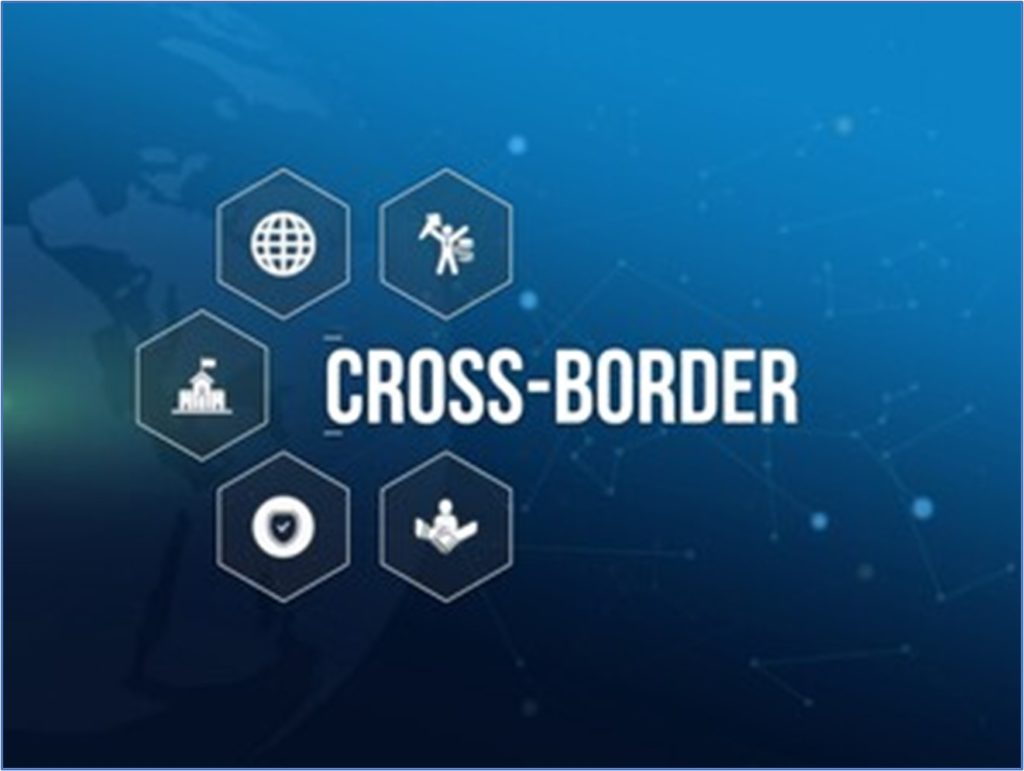
Global e-commerce expansion continues to redefine the shape and complexity of supply chains. It is no secret that the world of e-commerce has been booming for a while. Experts forecast that the world of e-commerce will only continue to grow.
According to Phaneuf, US e-commerce sales are expected to cross 1$ trillion for the first time in 2022. This goal was not expected to be reached before the pandemic until 2024. The cross global growth is forecasted to reach %1.06 trillion in 2022 (Phaneuf, 2022).
See the graph below illustrating the leading countries based on retail e-commerce sales growth in 2022. Even large players such as the US and India eExpect a high growth percentage in 2022 (Statista, 2022).
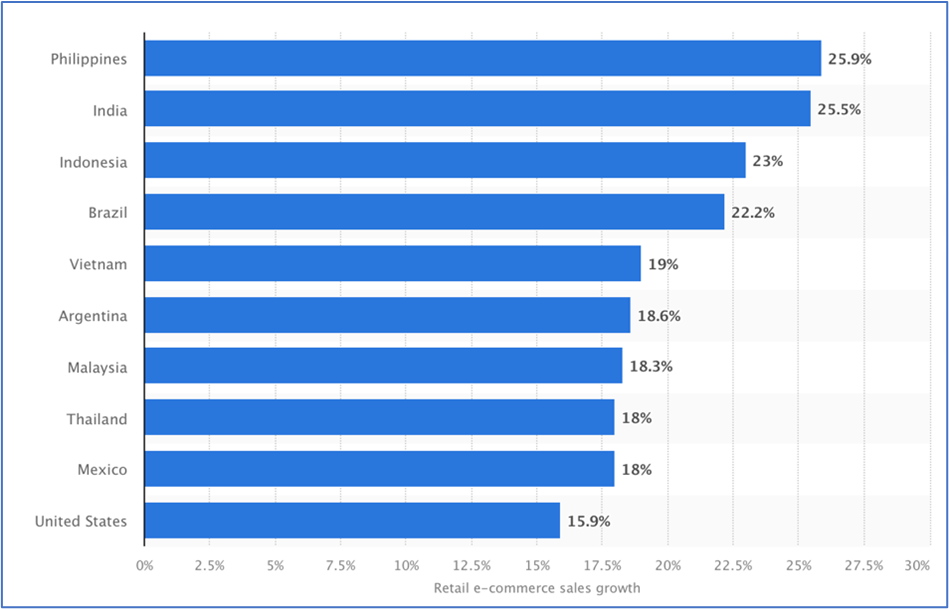
Figure 1(Leading countries based on retail e-commerce sales growth in 2022 – (Statista, 2022))
Still, there are problems, such as trouble maintaining cross-global compliance with trade regulations and applying data to work more effectively. Let’s take a closer look at cross-border e-commerce challenges and how your network partnerships and improved global compliance rates can help you do more with less.
What is Cross-border E-commerce?
Simply put, cross-border e-commerce is when sales occur and result in transactions across literal country borders.
For instance, a Dutch clothing store that sells and ships their products to foreign Spain (crossing borders) through their online website is conducting cross-border e-commerce. This sale can also be conducted from their computer or mobile device through marketplace platforms such as Amazon or eBay. But, this is where the complexity begins to grow. It’s no longer enough to maintain compliance with regulations in the home country but all countries and all countries during which goods might move across roads or other infrastructure.
How Prevalent Is Cross-border E-commerce Exactly?
Cross-border logistics is growing throughout the e-commerce world in tandem with supply chain resilience, payment flexibility, and generalized market expansion. For instance, Dutch cross-border e-commerce has shown to be increasing significantly with 95% of Dutch consumers shop online nowadays (Emerce, 2022).
The combined sales amount to 14.8billion euros. Dutch e-commerce infrastructure now includes 67.000 online stores alongside a strong, developed logistical network.

Potential risks to look out for
Most business activity comes with risk, including cross-border e-commerce. But cross global compliance risks can be broken into these three categories(Laubscher, 2021):
- Even a small number of disruptions can lead to lasting negative effects. For example, negative customer reviews have strong impacts on customer retention and prospect leads. Meanwhile, delayed orders result in lost profitability . Such issues are especially difficult for starting businesses with limited or relatively unknown brand reputations.
Many e-commerce businesses make the smart decision to outsource their cross-border logistics needs to a fulfillment service provider. Outsourcing reduces risk potential error and allows them to focus on their core business.
- Different, changing regulations are another risk. Proper conduct of cross-border e-commerce means your business must comply with the regulations of all affected countries.
For instance, conducting cross global commerce with many different countries, especially outside of the EU, inherently brings many risks. Changing regulations requires constant, extensive knowledge of what you can and cannot do when selling products. Small mistakes may result in heavily delayed shipments that spiral into accumulating negative effects.
Before any cross-border transaction, know your compliance requirements. Further, scaling businesses often make use of external parties, such as consultancy parties, to ensure global compliance. Others completely outsource fulfillment procedures to cull all risks associated with cross- border logistics.
- Fraudulent behavior is yet another risk. Bots (fake customers created by malware) might place tons of fraudulent orders. Also, use well-established, transparent payment service providers.
Having multiple payment options also increases payment flexibility, and reducing the order threshold, such as minimum for international shipping, is a positive strategy. Inexperienced or limited payment service providers could lead to additional setbacks, and you might need to refund several orders.

Get Expert Help in Cross Global Compliance, Payment and More With ModusLink
Cross-border logistics is essential to the success of all brands and crucial to scaling your e-commerce businesses. Know the risks, stay tuned with industry regulations, and adjust your strategy accordingly. Or, do it all in one move by outsourcing to ModusLink. Talk to a ModusLink Expert today to get started with your own cross global plan and fulfillment strategy.
Bibliography
Cross border e-commerce: Alles over internationaal online ondernemen. (2021, 11 juni). BZTRS. Geraadpleegd op 14 maart 2022, van https://www.bztrs.nl/blog/cross-border-e-commerce-alles-over-internationaal-online-ondernemen/
Day, B. (2019, 3 juli). Cross-border commerce, waar moet je aan denken? Bluebird Day. Geraadpleegd op 13 maart 2022, van https://www.bluebirdday.nl/blog/cross-border-commerce-waar-moet-je-aan-denken
Ecommerce News Nederland. (z.d.). Crossborder ecommerce – Verkopen over de landsgrenzen. Ecommerce News. Geraadpleegd op 11 maart 2022, van https://www.ecommercenews.nl/tag/crossborder/
Emerce. (2022, 24 januari). E-commerce voorbij de landsgrens? Hoe je met cross-border selling begint. Geraadpleegd op 13 maart 2022, van https://www.emerce.nl/achtergrond/e-commerce-voorbij-de-landsgrens-hoe-je-met-cross-border-selling-begint
Keenan, M. (z.d.). Global Ecommerce: Stats and Trends to Watch to Succeed Internationally (2022). Shopify Plus. Geraadpleegd op 12 maart 2022, van https://www.shopify.com/enterprise/global-ecommerce-statistics
Laubscher, H. (2021, 15 september). Why Cross Border Ecommerce is the Future of Ecommerce. Ecommerce Platforms. Geraadpleegd op 14 maart 2022, van https://ecommerce-platforms.com/articles/cross-border-ecommerce-future-ecommerce
Phaneuf, A. (2022, 22 maart). eCommerce B2B Industry Statistics for 2022. Insider Intelligence. Geraadpleegd op 12 maart 2022, van https://www.insiderintelligence.com/insights/ecommerce-industry-statistics/
Statista. (2022, 18 februari). Fastest-growing retail e-commerce countries 2022. Geraadpleegd op 11 maart 2022, van https://www.statista.com/statistics/266064/revenue-growth-in-e-commerce-for-selected-countries/
-
Importance of Payment Service Providers (PSP)

Customers want flexibility and choice of payment processors where possible. This is especially true when looking at business transactions and managing merchant accounts as a cross-border e-commerce shipper.
Generally speaking, the more payment types, rather mobile payment or even with virtual cards, boosts customer experience. And in turn, it means that it’s more likely a customer will complete the transaction. An August 2022 press release detailing the upcoming global decline of cash payments shared that “Cards and digital wallets are the most common payment instruments in most regions worldwide. Digital payments in the Asia-Pacific region accelerated, with China being one of the frontrunners toward a cashless society.”
Important, strategic choices have to be made regarding what payment service provider (also known as merchant of record) to use. Looking at an online payment transaction from the front-end is one thing, but, what about the other side, including direct bank transfers accounts or refunds and chargebacks? How do you choose the right merchant of record (MOR) and what differences do they offer? This article will cover the basics of payment services providers and what to look for.
What is a Payment Service Provider?
Payment service providers connect merchants to more extensive financial systems. This enables companies to accept certain payment types from their customers. Some typical payment options include card transactions, Apple Pay, and more.
Thus, payment service providers create a straightforward paying experience for the seller of record and their customers. In essence, the right MOR pay model is crucial to keep e-commerce businesses running behind the scenes.
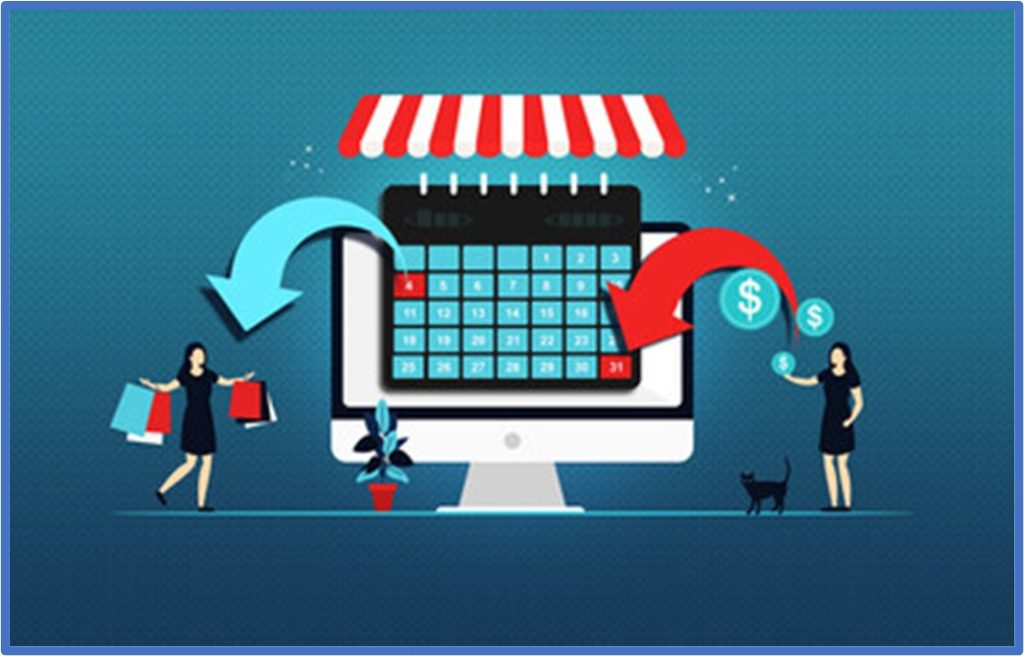
Key Characteristics of Quality PSP MOR Pay Type
Besides simplifying the payment process, working with such companies and service providers yields these additional benefits:
- Automation – Payment service providers function as the process operator for your customers’ transactions, using automation along the way. This saves your resources and time, and in turn, streamlines your transactional process. Well-known payment types and popular service providers, such as PayPal, Venmo or Zelle, also enable automated recurring transactions for monthly subscriptions.This removes much administrative and operative work that otherwise went into completing these multi-currency transactions manually, especially for repeat purchases within MOR pay types.
- Reliability and Issue-resolving – A large and experienced merchant of record typically provide guarantees of service and are usually seen as more reliable. They often work to reduce missing revenue following unsuccessful payments or resolve problems themselves. Disputes are handled by the payment service providers which again, contributes to your resource efficiency as you do not need to handle any MOR pay sticky situations yourself.
- Transparency and Clear Communication – Most payment service providers are also fully transparent. Their complete clarity in all activities combines with straightforward communication. More visibility helps build a strong and reliable relationship with the seller of record. Plus, they often provide 24/7 support meaning that issues can be resolved quickly, should they arise. Customers in turn should expect minimum downtime and are less likely to bounce before completing their order.

Now that you have insight on some of the key benefits of using a a particular payment type and service provider, you might ask yourself, why shouldn’t I use one?’
Of course, everything comes with downsides or costs. Payments service providers usually charge you a fee per transaction. Some payment gateways might even charge additional fees such as initial partnership fees or just a monthly fee.
Payment service providers help contribute to business reliability and flexibility. Remember that the benefits of using a well-known, professional payment service provider outweigh the cost or investment needed.
Innovations
The financial technology industry is rapidly growing and resulting in the introduction of many innovative payment solutions. Customer payment types preferences are also changing. Everyone from seller to consumer and the merchant of record and seller of record is impacted by these changes.
For instance, there is a clear increase in completed mobile, contactless, or cryptocurrency-based transactions. Even ‘buy now, pay later’ is now mainstream, and it all indicators industry-wide growth.
Streamline Your Payment Types and MOR Pay Compliance With ModusLink
It is important to keep track of the newest and most popular developments in the payment world. Keeping up means you know how to maintain a competitive advantage, and in fact, many businesses often seek external professional advice to maximize the efficiency of their MOR pay networks.
Would you like to know more about how your Business can improve by staying up to date with the latest innovations regarding payment types and payment service providers? Talk to a ModusLink Expert today by clicking here!
Bibliography
(August 2022) Global Online Payment Methods 2022 . yStats GmbH & Co. KG, Accessed October 11, 2022, From https://www.researchandmarkets.com/reports/5441234/global-online-payment-methods-2022
R-07_How e-commerce has changed CRM
Fibontix. (2022, 9 januari). Top Payment Service Providers | Key Factors & What to Expect. Fibonatix. Geraadpleegd op 11 februari 2022, van https://www.fibonatix.com/resources/what-to-look-for-top-payment-service-providers/
Innovative Payment Solutions Across the FinTech Landscape. (2022, 7 januari). FinTech Magazine. Geraadpleegd op 11 februari 2022, van https://fintechmagazine.com/digital-payments/innovative-payment-solutions-across-fintech-landscape
The Top 11 Online Payment Service Providers in 2021. (2020, 27 november). WildApricot Blog. Geraadpleegd op 11 februari 2022, van https://www.wildapricot.com/blog/online-payment-services#save-you-lots-of-trouble
What Are Payment Service Providers? – Insights | Worldpay from FIS. (z.d.). FIS Global. Geraadpleegd op 12 februari 2022, van https://www.fisglobal.com/en-gb/insights/merchant-solutions-worldpay/article/what-is-a-payment-service-provider
-
Fulfillment-as-a-Service

Life at the most basic level is all about progress and growth. The forward path through time is key to everything done from the moment we are born till the day we die. This forward growth is also key for businesses of all sorts engaged in B2C fulfillment and B2B fulfillment endeavors. It comes down to effective digitalization and automation approaches to fulfillment services. Working with B2C customers and B2B shipment clients is integral to the daily operations of shipping service providers today, but growth means that outsourcing is sometimes necessary. That’s where fulfillment-as-a-service (FaaS) has come into play.
FaaS is where companies partner with a third-party company or warehouse to prepare and ship B2C and B2B orders. This allows a company to tap into fulfillment partner capabilities with no upfront investment of capital, and only pay for services that are needed and actually utilized with global fulfillment.
For any business to grow and scale, it must find ways to improve and optimize, even at peak moments. This usually means businesses are looking for ways to gain a competitive advantage within their current market. A highly attractive way of gaining such competitive advantage is by outsourcing part of your activities that are highly resource intensive. This makes outsourcing fulfillment a great option to look at for many businesses that are looking to scale (Busby, 2019).
B2C Fulfillment Success: It’s All Analyze – Optimize – Grow
The main reasoning behind the attractiveness of outsourcing fulfillment is that the order fulfillment concept is broad and widespread. This essentially means that the number of areas of potential improvement is usually high. By outsourcing fulfillment and effectively acquiring ‘Fulfillment as a Service’ businesses can gain a strong competitive advantage within the e-commerce and global commerce markets. The well-known optimization process Analyze – Optimize – Grow, is highly applicable here. Companies that are looking to outsource their B2B fulfillment process and seek help with B2C fulfillment should follow these steps in order to do so effectively (Thill Inc., 2021). Here is what each of these steps looks like in fulfillment solutions and ecommerce fulfillment processes:
1. Analyze
As mentioned before, outsourcing Fulfillment is highly popular due to the main potential areas of improvement. In order to get the best results up front, a strong analysis has to be made that identifies key areas of improvement in the Fulfillment process. This, for instance, could mean a detailed lead time analysis, a performance courier report, a return efficiency overview, etc. Professional supply chain experts often provide their insight before working with their potential partners. This allows the cooperation to flow smoothly and allows expectations to be met. Once the key global fulfillment areas of fulfillment as a service improvement have been identified, the actual optimization commences.
2. Optimize
The optimization process of course changes depending on the area that requires CRM optimization. The main red line within the process is often the same. Professional fulfillment experts that hold up-to-date knowledge of the current fulfillment innovations are often very able to implement disruptive measures to drastically improve the Fulfillment process for businesses. The best fulfillment companies make use of the most innovative technologies such as IoT (Internet of things) e.g., temperature sensors for Cargo loads, AGV (Automated Guided Vehicles) to maximize warehouse efficiency. Common but effective measures are also often implemented such as a more effective returns process, or the implementation of a ‘same-day delivery fulfillment’ option.
3. Grow
The most important indicator of successfully outsourcing your fulfillment process is of course continuous and stable growth. Outsourcing your fulfillment process should effectively reduce your resource utilization rate and improve the efficiency of your overall business as you are able to focus on other internal aspects. Evaluating periodically will result in a better partnership and will ensure that expectations are met accordingly. An important thing to keep in mind is that knowledge and insight of professional fulfillment companies should always be considered. A small ‘bump in the road’ can often be overcome by staying with the partner in question and keeping the partnership alive.
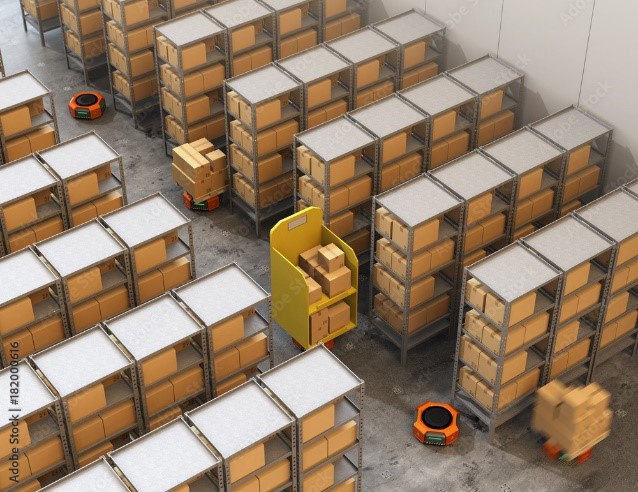
Key Benefits of Successful FaaS
There are plenty of benefits that come with outsourcing your fulfillment services. One of the greatest is the far-reaching impact supply chain tools have on the industry.
A couple of additional benefits of a global fulfillment approach to fulfillment as a service are mentioned below.
- Cash flow optimization – Handling fulfillment services internally can potentially require a high investment cost. Warehouses need to be rented, customer service staff must be hired, trucks and other moving vehicles have to be purchased etc. Making use of a fulfillment provider essentially turns these fixed costs into variable costs as the costs often scale with products/sales moving through the Supply Chain. Making use of a fulfillment provider can often impact your cash flow substantially by increasing the cash in hand and reducing fixed costs.
- Tap into new markets – Looking for competitive advantage will always be a key element that businesses decide to focus on as it yields them the opportunity to outpace competition. The cycle is simple yet highly effective. Fulfillment as a service increases your resource effectiveness by reducing resource intensiveness, in turn allowing you to allocate your resource in a different manner. This opens up doors to diversify by tapping into new markets that provide you new prospects.
- Expertise results in lower costs – Costs are almost always going to decrease when making use of a professional Fulfillment service provider. This has many reasons behind it. An example would be bulk transport contracting. Some Fulfillment experts make use of their connections which yields them cheaper transportation fares due to bulk consolidation with other loads/companies. In the Transportation sector, volume often means cheaper pricing per kg. Professional fulfillment companies often know exactly how to leverage this concept which results in cheaper transportation prices overall, thus reducing your costs.
Maximize Global Fulfillment With ModusLink
When businesses need help with fulfillment services, whether that is B2B fulfillment or B2C fulfillment, taking an ‘as a service approach is proving to be effective. With current levels of demand and customer impacts, industry leaders need to partner with a service provider who understands the market trends and consumer demands. Supply chain party logistics concerning B2B and B2C orders is easier with expert insight and guidance. Contact ModusLink today to learn more about customer expectations and B2B fulfillment services from start to finish.
Bibliography
Busby, A. (2019, 24 oktober). Fulfillment As A Service, Why The Future Of Delivery Is In The Clouds. Forbes. Geraadpleegd op 26 februari 2022, van https://www.forbes.com/sites/andrewbusby/2019/10/23/fulfillment-as-a-service-why-the-future-of-delivery-is-in-the-cloud/?sh=6b83309d4af1
business.com editorial staff. (2014, 25 juni). Benefits of Using an Order Fulfillment Service. Business.Com. Geraadpleegd op 2 maart 2022, van https://www.business.com/articles/benefits-of-using-an-order-fulfillment-service/
Roggio, A. (2011, 4 november). 5 Reasons to Consider Fulfillment Services. Practical Ecommerce. Geraadpleegd op 5 maart 2022, van https://www.practicalecommerce.com/5-Reasons-to-Consider-Fulfillment-Services
Thill Inc. (2021, 21 oktober). Fulfillment Center Pros & Cons. Thill Inc. Geraadpleegd op 5 maart 2022, van https://thillinc.com/blog/fulfillment-center-pros-cons/
-
What are Merchant of Records (MOR)

New and startup businesses and shipping service providers often struggle to generate growth and maintain a competitive advantage. With the ever-changing market trends and consumer demands, it is difficult to manage merchant relationships and processes. Successful scalability begins with the help of outsourced omnichannel services, including outsourcing the Merchant of Records (MOR).
That’s especially true with multiple contracts and partnerships involved. However, as the business type and demands grow, change becomes inevitable, and overall management gets more complex.
Scaling effectively requires a new approach to operations management and fulfillment partner selection. Businesses that can scale accordingly often show activities that are indicative of correct resource allocation and optimization.
There are plenty of ways to enable supply chain optimization. Some options include:
- Optimized inventory planning.
- Well-designed Customer Resource Management (CRM) software.
- Robust marketing strategies and more.
Businesses use a variety of these tools to unlock growth. Establishing an outsourced MOR contributes to the improvement of omnichannel 3PL services within businesses. But, it’s best to start by asking, “what is a Merchant of Records?”
What is a Merchant of Records?
Excessive growth often comes naturally with extra work. For instance, consider the added complexity as the following processes grow:
- Payment processing and handling grow more complex.
- More payments, chargebacks, and refunds need to be processed.
- Tax documentation complexity increases every year.
- Pricing negotiation becomes more difficult with each partnership.
All this work requires extra assessments and better resource management processes. Leveraging outsourced omnichannel services simplifies things.
Companies must use new and improved supply chain tools or CRM platforms. Still other opportunities to simplify exist.
Companies can be their own merchant of record, but they can also outsource this work to entities. These third-parties sell goods or services on behalf of a business and, by doing so, take on the liability related to the transaction (Collier, 2021). Working with a 3PL company that offers omnichannel services can improve your processes and increase your productivity.The Merchant of Records helps you stay focused and unlock resource efficiency. Together, outsourced financial services create better growth generation. Meanwhile, omnichannel fulfillment, customer interaction, contact management and other processes continue uninhibitedly.
Of course, outsourcing omnichannel 3PL services, including MOR, creates scalability for any business entity and is continuously improving customer support. The MOR essentially relieves the burden of performance on all payment activities.
Well-established merchants of records provide complete transparency at all times. See the picture below for a simplified visual of the MOR and outsourced omnichannel process.
Figure 1. Merchant of Records visual)
As scaling is often difficult for many companies, lifting the burden of financial operational responsibility through outsourcing a Merchant of Records is critical. It enables an increase in focus and commitment that in turn, strengthens scaling and growth. According to a report on omnichannel 3PL company services by Fortunly (2022), 71% of financial service executives outsource or offshore some of their services. Meanwhile, 78% of businesses all over the world feel positive about their outsourcing partners.
Further statistical research suggests that the outsourcing market for financial services will only continue to expand. Changes will remain a constant as time goes on and recovery from COVID-19 disruptions continues.
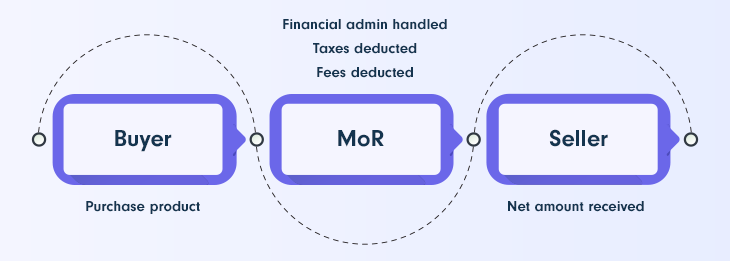
Figure 1. Merchant of Records visual) https://blog.payproglobal.com/what-is-a-merchant-of-record
Tapping Into New Markets With Improved MOR Services
Outsourcing a Merchant of Records enables better internal resource management. Outsourcing grants efficiency to tap into new markets. This allows them to expand their customer base.
It can also help improve supply chain responsiveness as scalability and adaptability also improve. According to Wunker e.a. (2011), one of the greatest contributing factors of success to any business is a company’s ability to capture new markets.
This can be related to new products, customers, industries etc. Tapping into new markets is a great way to generate additional sources of profit and gain a competitive advantage for any omnichannel 3PL company.
Merchants of Record outsourcing services also analyze market financial data. In turn, they provide a highly detailed action plan. Thus, you can better track, analyze and evaluate your operations. The value of the Merchant of Records applies across both forward and reverse logistics.
Improve Outsourced Omnichannel Services With ModusLink
As mentioned before, many successful businesses outsource at least part of their financial operational activities to optimize their practices. Would you like to know more about how your business can implement a professional Merchant of Records? If you have questions about these services and how to maximize your impact as an omnichannel 3PL company, talk to a ModusLink professional today to get started with improved MOR services and enhanced CRM solutions.
Bibliography
Fastspring. “What Is a Merchant of Record (And Why Should You Care?)”. FastSpring, 23 december 2021, fastspring.com/blog/what-is-a-merchant-of-record-and-why-you-should-care.
Fortunly. “15 Must-Know Outsourcing Statistics for 2022”. Fortunly, 9 februari 2022, fortunly.com/statistics/outsourcing-statistics/#gref.
—. “15 Must-Know Outsourcing Statistics for 2022”. Fortunly, 9 februari 2022, fortunly.com/statistics/outsourcing-statistics/#gref.
Mansfield, Dani. “What is a merchant of record en why use an MoR as a solution for payments?” Paddle, paddle.com/blog/what-is-merchant-of-record. Geraadpleegd 9 februari 2022.
Meir Amzallag. “What Is A Merchant Of Record: How Does MoR Cut eCommerce Risk?” PayPro Global, 23 november 2021, https://blog.payproglobal.com/what-is-a-merchant-of-record.
Suess, Emily. “4 Tips for Growing Your Business by Tapping Into New Markets”. Small Business Bonfire, 2 januari 2013, www.smallbusinessbonfire.com/new-markets.
Wunker, Stephen, e.a. “Achieving Growth by Setting New Strategies for New Markets”. Ivey Business Journal, 13 februari 2015, iveybusinessjournal.com/publication/achieving-growth-by-setting-new-strategies-for-new-markets.
—. “Achieving Growth by Setting New Strategies for New Markets”. Ivey Business Journal, 13 februari 2015, iveybusinessjournal.com/publication/achieving-growth-by-setting-new-strategies-for-new-markets.
-
How e-commerce has changed CRM

Despite the rapidly growing and changing environment of small businesses in general today, the main priority of business owners and management teams must remain focused on serving their customers and meeting their needs and service expectations. Without a loyal and respectable customer base, many companies would cease to exist. Strong customer journey optimization, backed with digitization and automation, is vital to continued growth and recovery for any business dealing with e-commerce order processing and increased customer satisfaction and retention.
E-commerce cloud systems are what form the foundation for online business operations today. Return customers, word-of-mouth recommendations, and loyal client bases will always be the foundation of strong businesses. It allows stability and security that aids in growth and scalability, even during difficult market swings.
Traditionally, it was often common to reward returning customers by providing appropriate discounts or friendly in-store service. This is more difficult to do in a completely digital environment where journey mapping, order routing, customer services, and overall business management does not respond well to manual processes.
To service customers correctly business owners have to look elsewhere and approach rewards, memberships, perks, and customer service in general from a digital e-commerce approach. Strong e-commerce order management processes can make all the difference, especially in a post-COVID-19 world.
Customer Relationship Management and e-Commerce
The primary means of CRM (Customer Relationship Managed) is to make sure your customer receives what they seek in an enjoyable manner. Traditional businesses keep records of frequently visiting customers to make sure their next visit will be a success, and they also take the time to choose a fulfillment partner that makes things easier in the long run.
Understanding the state of supply chains and other critical business components is the goal of customer journey optimization. The primary goal is to ensure everyone who visits a company website, makes a purchase, or requests information gets what they need as quickly and effectively as possible. In e-commerce, customer data is usually stored within big databases that accurately store all data of previous purchases.
This allows an e-commerce business to cater an online shopping experience exactly to a customer’s needs. According to Castillo (2021), most e-CRM software, order management systems (OMS), and e-commerce cloud platforms also have the ability to analyze your site’s metrics. This can be accomplished with the latest innovations in supply chain tools and shipping software and can assist with vital metrics such as: ,
- Conversion rates.
- Customer click-through rate.
- Inventory management options.
- Email subscription opt-ins.
- Which products customers seek out.
- Improved customer journey mapping.
- Better alignment with customer expectations.
These features provide e-commerce order management teams and business owners the ability to personalize customer’s shopping experience to great heights. In an era of individualism, making your customers feel wanted and important is essential. Giving your customers a shopping experience that is unique to them creates a feeling of wholesomeness and increases return rates significantly. It is the foundation that allows for strong customer journey optimization and allows for the benefits that follow as well.
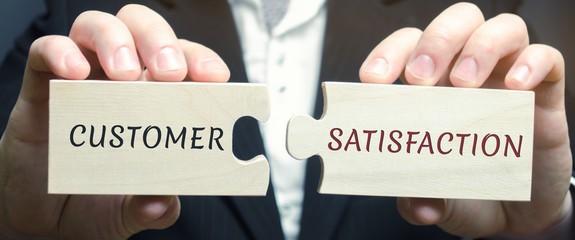
Innovating CRM Options For Better Customer Engagement
The innovative and advanced CRM software currently out in the market has shown to be immensely beneficial to many e-commerce businesses. An important question follows, “how is an e-commerce business able to retain a high customer satisfaction ratio?”
High customer satisfaction rates are a result of correctly executed Customer Relationship Management strategies and a full integration of e-commerce cloud services.
Any business that aims to correctly manage its customers should aim for a personalized strategy that caters to business and the product/services in question. However, this does not mean that there are no general ways to improve your customer satisfaction rates. Any high-level marketing/sales academy teaches many of the coming principles as important for e-commerce businesses to create/maintain high-level customer satisfaction rates and improve customer journey optimization.
General Tips to Improve Customer Experience for E-Commerce
Surviving the e-commerce rush required quick scalability, reliable adaptability, and easy flexibility within the business structure. According to Insider Intelligence, looking at e-commerce order management and customer success stories over the past few years can show business owners where to focus and what steps to mimic for themselves. “Tech-savvy consumers looking for quick, seamless purchasing options will continue to lean on e-commerce throughout the next few years—and more consumers will jump on the bandwagon. We forecast US retail e-commerce sales will grow 16.1%, reaching $1.06 trillion in 2022….
Business-to-business (B2B) e-commerce statistics also show continued growth in 2022. Seemingly every aspect of business was moved or accelerated towards a digital structure amid the pandemic….Amazon’s influence in the e-commerce space is unmatched. The etailer boasts nearly 40% of all US e-commerce sales. Its US e-commerce sales will grow by 15.3% this year, reaching more than $3.6 billion. “
Business owners and managers can improve CRM processes, enhance customer journey optimization, and remain focused on meeting their customers’ unique e-commerce needs and demands regarding e-commerce cloud access by keeping the following things in mind:
- Keep it simple. Many new e-commerce businesses create the mistake of making their online shopping experience too complex. According to Santora (2020), 55% of shoppers abandon their virtual shopping carts due to unexpected shipping fees, unclear taxes, and time-consuming purchasing.
This statistic clearly shows that customers want their product with a simplistic shopping experience. A lack of transparency and an abundance of steps needed to complete a shopping process takes away from a customer’s shopping experience and forces them to leave their carts without purchasing.
- Value Feedback. The digital opportunities that come with e-commerce offer a myriad of possibilities when it comes to gathering customer data. It is important to document both your customers’ positive and negative feedback as these can be used to improve your e-commerce website/shopping experience.
Actually using your customers as fuel to improve your business is a core component of many big e-commerce businesses that are able to maintain loyal customer bases. Look at both the positive and negative feedback, take in what comes back frequently, and adjust your business accordingly. This will greatly improve supply chain responsiveness as it relates to the business.
- Multiplatform Support. Another way to improve your relationship with the customer base is to make sure your e-commerce business is optimized for all platforms. This can be interpreted in many ways.
Businesses must be optimized for all mobile platforms for instance (Apple/Android). Website quality deviation between platforms can be detrimental and exclude large parts of your customer base. This should be avoided as much as possible so the quality of between platforms should be checked frequently.
Improve E-Commerce Order Management and Customer Service With ModusLink
Many businesses struggle to keep up with the ever-changing market of online commerce, sales, and shipping involved with the circular economy of today. Maintaining the highest levels of customer journey optimization and customer satisfaction demonstrates how many business owners are ill-equipped for this. Along with improving digital processes on-site, many also decide to outsource their optimization to external professionals such as ModusLink e-commerce cloud service providers.
Are you interested in learning more about the latest developments regarding CRM operations, e-commerce order management, and e-commerce cloud services? Request a ModusLink demo today, and get started on the path to improved e-commerce sales and management.
Bibliography
Atchison, J. (2020, 18 november). How to Boost Customer Satisfaction on Your Ecommerce Website. Business 2 Community. Geraadpleegd op 16 januari 2022, van https://www.business2community.com/customer-experience/how-to-boost-customer-satisfaction-on-your-ecommerce-website-02363607
Castillo, D. (2021, 8 december). What is the role of customer relationship management (CRM) in e-Commerce? Sana Commerce. Geraadpleegd op 16 januari 2022, van https://www.sana-commerce.com/blog/what-is-the-role-of-customer-relationship-management-in-e-Commerce/
Ecommerce News Nederland. (2020, 7 december). CRM voor de ecommerce. Ecommerce News. Geraadpleegd op 15 januari 2022, van https://www.ecommercenews.nl/crm/
Santora, J. (2020, 7 november). 5 Cart Abandonment Stats to Help You Win “Lost” Sales Now. OptinMonster. Geraadpleegd op 15 januari 2022, van https://optinmonster.com/cart-abandonment-statistics/
-
What your e-commerce website needs

E-Business Website Essentials
A formal and high-quality suit, polished and fitting shoes, and a pleasant-smelling cologne or perfume. These three physical elements represent a professional and business-class image. Any experienced business professional knows the importance of appropriately conveying themselves through aftermarket support and other customer-focused and online retailer services. We all know appearance is crucial, and first impressions are critical in the business world. Physical appearance is the first thing people notice when meeting someone new. This goes for personal and business scenarios, but that impression is vital for the average business today, that impression is essential. It is made when a customer, or potential customer, first visits the official business website. Making a great first impression with an online store and contact point is critical to gaining a repeat customer! A robust cloud-based e-commerce platform and global portal access point online are vital to growing and expanding your business with digitization and automation and a complete e-commerce website.
Businesses with a strong, well-developed, and polished website tend to have better customer interaction and retention. Points such as global portal access, website layout, and content curation matter. Each one contributes to how people view and utilize online content. The bounce rate (the rate at which people close a website after opening) increases significantly when a website has not been tended to properly. This is a significant fact to keep in mind for businesses that get their website’s primary conversions/sales.
When looking at successful cloud-based e-commerce platforms, their websites are usually attractive to clients for the following reasons.
- Personalization – Successful e-commerce websites allow their website to adapt to their customer’s wishes and needs (partly)automatically. This enables customers to find more quickly what they are looking for and make the purchase, thus resulting in higher conversion rates. The ability to cater to a customer’s needs by offering tailored aftermarket support and cost-effective options is essential for an E-commerce website to succeed.
- Automation & Data Collection
An automated website that collects data from anyone who is active opens doors of opportunity when it comes to client retention and catering accuracy. Correct data acquisition and easy global portal access through a company’s website will allow business access to a more accurate knowledge of its current customer base. This will help them know how to tailor aftermarket support services. In turn, the business can advertise the shipment of goods and cater more precisely to current and future customers.
- Ease of Use – Nobody wants to spend hours on a website trying to find the right product. Complexity is not always your friend. When it comes to successful websites, online shop setup and utilization are very important to keep in mind. When websites become too complex, plenty of people give up when not being able to find the right product. Your E-commerce business should be defined and created with customer needs in mind. Ultimately, customer experience should be as simple as possible. From start to finish, the cloud-based e-commerce platform development and management process should be as streamlined as possible.
The need to improve
We are living in a fast-changing world. It is imperative to keep in touch with third-party logistics and customer needs. Enhancing and reinforcing your main point of contact (your website) is critical. It is also a crucial step aiming to attract and retain customers. The above three points mentioned will help to improve the global portal layout for any domestic or cross-border E-commerce company in the United States.
Many businesses, for scaling purposes, outsource their supply chain and operational activities to professional e-commerce companies, such as ModusLink. These companies use many tools to create and improve websites and offer customized aftermarket support opportunities. Some examples of impactful tools, e-commerce platforms, and CRM applications include the below:

Chatbots
Correct use of Chatbots and open-source digital features can elevate your E-commerce website to new heights. Chatbots are known to yield increased customer satisfaction rates. This can be seen through their increase in popularity and uses.
Chatbots are now part of many call centers, E-commerce businesses, cloud-based e-commerce platforms, global portal hubs, and established companies. Chatbots are often implemented as a first point of contact/help before reaching customer service to determine the customers’ needs and questions better. However, many of today’s popular chatbots even provide other services that allow them to be more flexible (Neusser, 2021).
24/7 Assistance
Automated responses and real-time data processing are more than just popular logistics terms. They help improve any E-commerce website as they can be operational all day, every day of the week. The ability to aid customers with their basic needs without needing human interaction always helps everyone.
Team members can improve response times, and customers enjoy automated assistance with basic needs or concerns they have. The extent of management effort is directly linked to the ability of cloud-based e-commerce platforms and websites to help customers access the information they need when they need it..
Shipping and Delivery
Aside from aiding customers with basic questions, digital media and global access websites can provide accurate information to customers. Critical points for shipping and transportation services can easily be accessed and reviewed online without the need to speak to a customer service rep every time. Questions about shipping and delivery or order status tracking can also be implemented within a chatbot. This allows for even greater flexibility within cloud-based e-commerce platform operations. It will enable e-business owners and managers more insight into customer service teams. This in turn gives them more time to focus on complex customer questions/demands with cloud hosting and digital commerce solutions and services.
Establishing appointments
Cloud-based e-commerce platforms can also set up physical or online appointments with customers should the need be there. Customers can use online chatbots and automated request forms to look for quick Q&A assistance. This also allows customer service teams to contact the customer later to set up an appointment. However, this method does require strong anti-bot detection measures in place or some sort of security protocol in place. It all will help sort through messages for logistics terms and to scan for spam and other harmful information.

Improve Aftermarket Support With ModusLink
Would you like to know more about the latest developments regarding e-business tools? If you are ready to learn more about cloud-based e-commerce platforms we are here. It is time to understand how global portal and website access can improve customer retention; the answers are waiting for you. Connect with ModusLink expert to learn more today.
Bibliography
E-Business – Technology and Networks. (z.d.). sideplayer. Geraadpleegd op 13 januari 2022, van https://slideplayer.com/slide/8765285/
Neusser, S. (2021, 9 december). Technologies every e-commerce site needs. Sana Commerce. Geraadpleegd op 10 januari 2022, van https://www.sana-commerce.com/blog/technologies-used-in-ecommerce/
Rahman, S. (z.d.). GRIN – Introduction to E-Commerce Technology in Business. Grin. Geraadpleegd op 11 januari 2022, van https://www.grin.com/document/280494
Willas, S. (2021, 17 december). 5 E-commerce Technology Trends That Will Shape The Future [2022]. MoEngage Blog. Geraadpleegd op 13 januari 2022, van https://www.moengage.com/blog/5-e-commerce-technology-trends-that-will-shape-the-future/